Winter photography? Honestly… for a lot of people winter is not a favorite season – for anything. But even if it’s the least favorite, it’s still the most beautiful. Who can resist the allure of fresh, undisturbed snow, folded on the tree tops like a blanket?
Few photographers can, that’s for sure. While ordinary folk huddle indoors, the rest of us grab our cameras and trudge through the cold in search of that one fantastic shot. But there’s a problem: Winter photography isn’t easy.
If you want to capture the heart of this magical season, you’ll have to handle your camera a bit differently. Here are 7 winter photography tips for beginners and pros alike.
Stay Focused
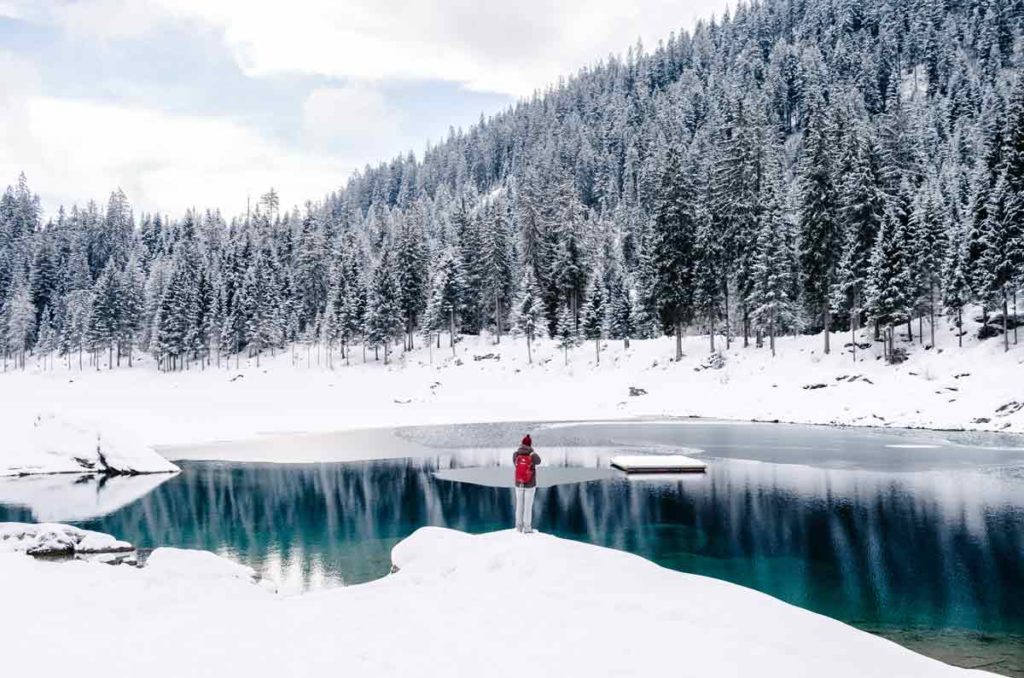
There are many obstacles during winter that impact your camera’s autofocus feature. For one, winter landscapes tend to have low contrast, thanks to a white blanket of snow. Plus, the autofocus may try to home in on snowflakes dancing in the wind.
If you experience any of these issues, take a deep breath and disable your camera’s autofocus. Manual focus features will vary depending on your camera of choice. Be sure to brush up on this functionality before braving the winter cold.
Use a Dark Background
Contrast is a rare gem when you’re shooting in cold weather. How can you emphasize delicate snowfall amidst a snow-capped landscape? The trick is to make use of dark backgrounds and intelligent perspectives.
For example, take advantage of uncovered tree trunks or a brilliant blue sky. And what about trying winter night photography? A dark home presents a brilliant contrast to bright snow, especially if the lights are on.
Protect Camera Batteries
Batteries are less effective in winter conditions. The cold inhibits the chemical reaction, which means they’ll create less energy than usual. Depending on the weather, your camera batteries may last for only half their usual number of shots.
There are two simple ways to keep your camera operating in the cold. The first is to bring a spare set of batteries along. When your first batteries lose their charge, you’ll have backups prepared so you don’t miss a great scene of your winter photography shooting.
The other solution is even more effective. Keep your spare batteries somewhere warm, such as an inner pocket. You may also want to keep your first set tucked away, too, but that means you’ll have to set your camera up before taking a shot.
Bag Your Camera
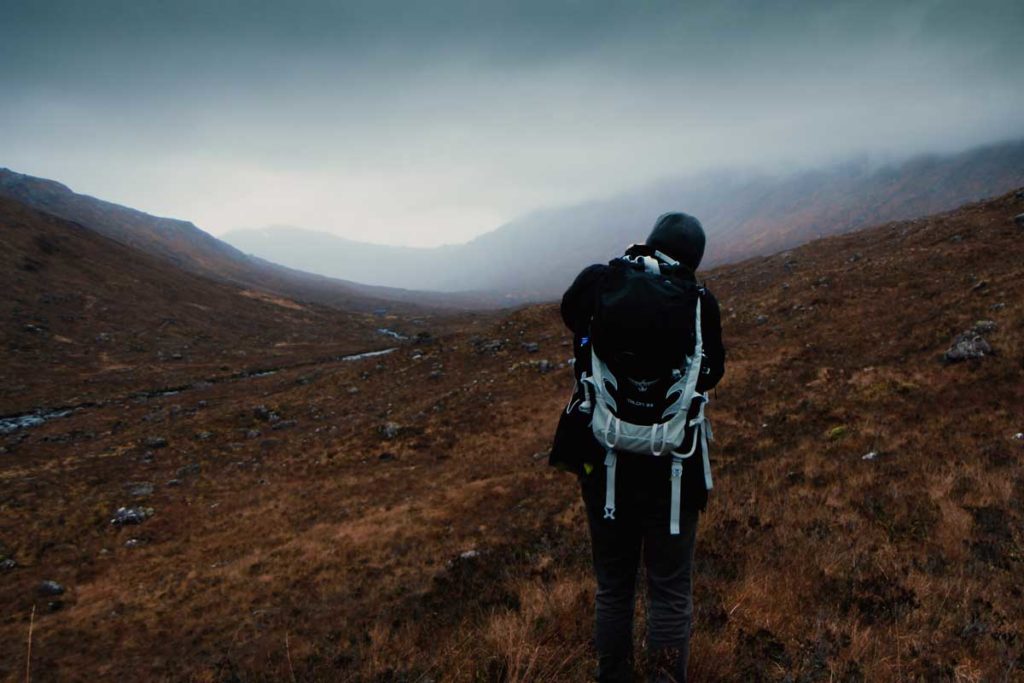
If you wear glasses, you know they fog up when you enter a warm building during winter. This can happen to your camera lens, too. The moisture in the warm air condenses on dry, cold surfaces.
Moisture of any kind presents a risk to your sensitive photography equipment. Plus, clearing the lens can take a few precious minutes and may delay the timing of your perfect winter photo.
Always keep your camera equipment in a photo bag (a plastic freezer bag works, too) to ward moisture away. Preferably, you won’t remove the camera from the bag until it’s had time to warm up. But if you do, you’ll at least have less fog to contend with.
And, as always, you should follow standard camera protection methods.
Increase Exposure
Snow confuses even the most modern, high-end equipment. If you rely on the automated exposure meter, all your cold-weather winter photography will be underexposed. Winter is brighter than you (or your camera) may think, especially when natural light is reflecting off fresh snow.
Look at your camera’s preview before taking a photo. You’ll most assuredly have to compensate. Start by increasing the exposure by half a stop.
However, don’t be surprised if you need to push the exposure value up 1 stop or even a bit more.
If this got a bit technical, don’t worry. Just remember this: bright environments need more exposure compensation.
Manage Shutter Speed
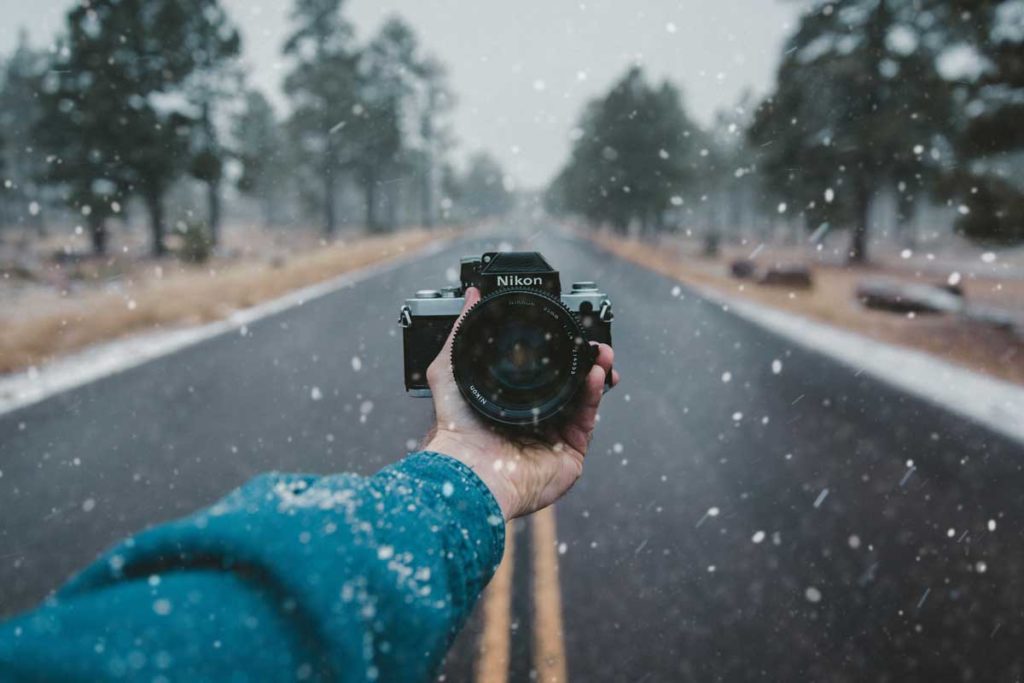
When most people think of beautiful winter photography, they imagine stationary scenes of suspended, falling snow. You’ll have to manage your shutter speed if you want to capture a similar aesthetic.
Your camera’s shutter speed determines how long the shutter is open. That’s why a slow shutter speed can capture the motion of snowfall. This will lead to blurry, stretched snowflakes, especially the ones closest to the camera.
Depending on the composition of your shot, you may be looking to capture a bit of movement in your winter photography.
But if you want a still shot, increase your shutter speed to compensate. The best speed will depend on the wind and amount of snowfall. You can expect it to vary from 1/125 up to 1/400, for example.
Edit Winter Portraits
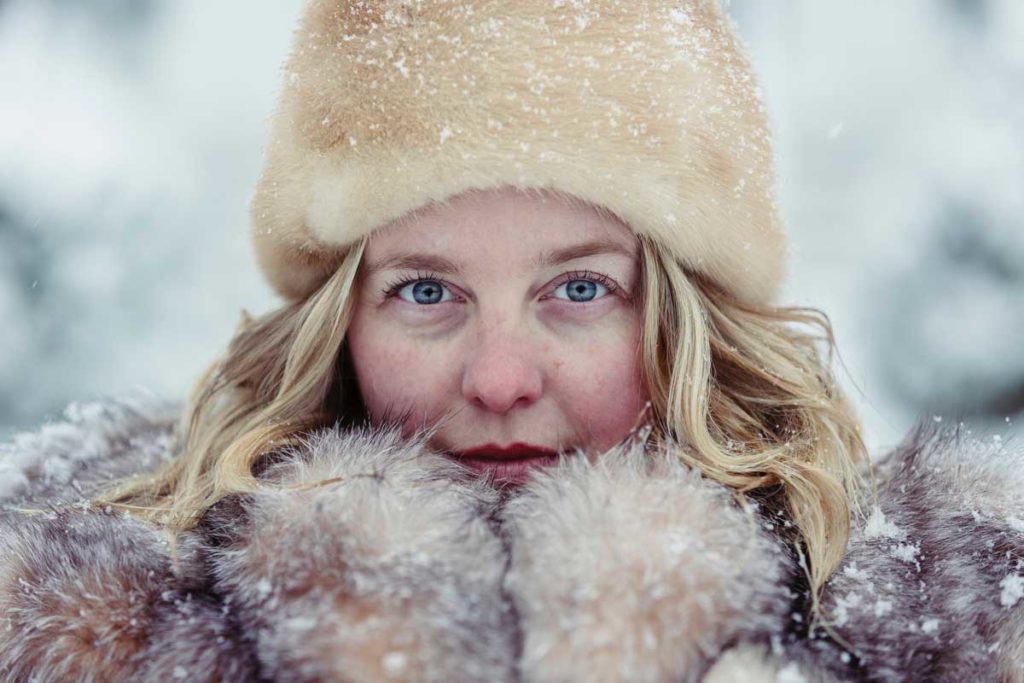
Although the wilderness steals the show during winter, there are other things to capture, too. Maybe your subject is a friend or family member, all bundled up in the cold. If that’s the case, there’s something you’ll want to remember:
People aren’t always at their most photogenic in extreme temperatures. 😉
The cold can make noses, cheeks, and ears turn harsh shades of red and orange. Thankfully, that’s what postprocessing is all about. There’s no shame in using editing software to make small changes to your photographs.
It’s perhaps the only option when it comes to taking winter portraits. You can remove shades of red and orange by lowering the specific color saturation by a few points.
Just take care not to overdo it and you’ll be all good!
Share Your Winter Photography
Winter photography is challenging for even the most seasoned photographers. But the season’s natural beauty can lead to some astoundingly beautiful shots, even if you’re still getting the basics down. Now the only thing that is left to do is finding the perfect location for your winter photography shooting. And yep, we’ve got you covered: Read our article about the best Après Ski destinations for your Winter getaway or check out the craziest places to visit in December.
You feel like you need a bit more help? Check out more tips on winter photography here.
P.S. We’ve kept a little fun wintery fact from you until the end: Did you know, that approximately 70,000 postcards are sent from Antarctica every year?

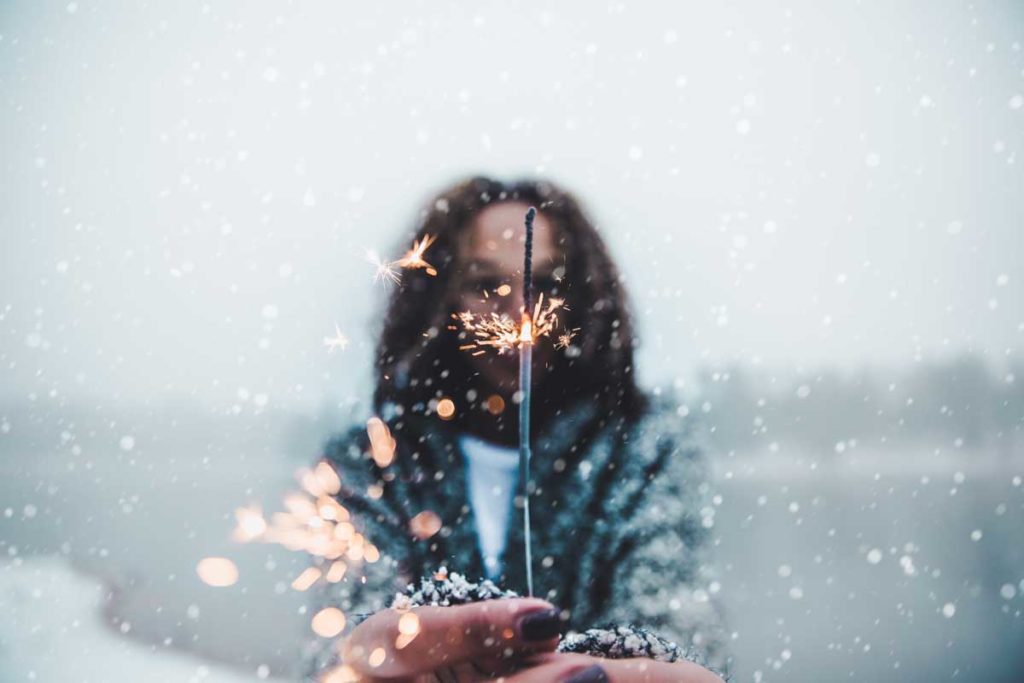
Comments are closed.